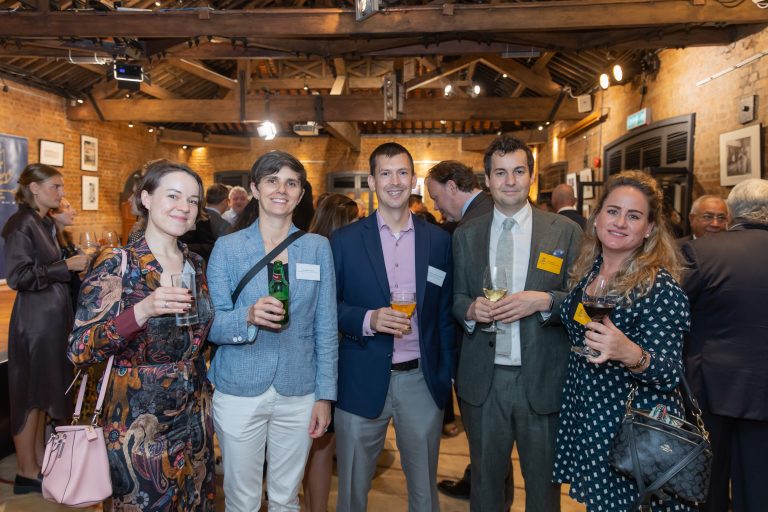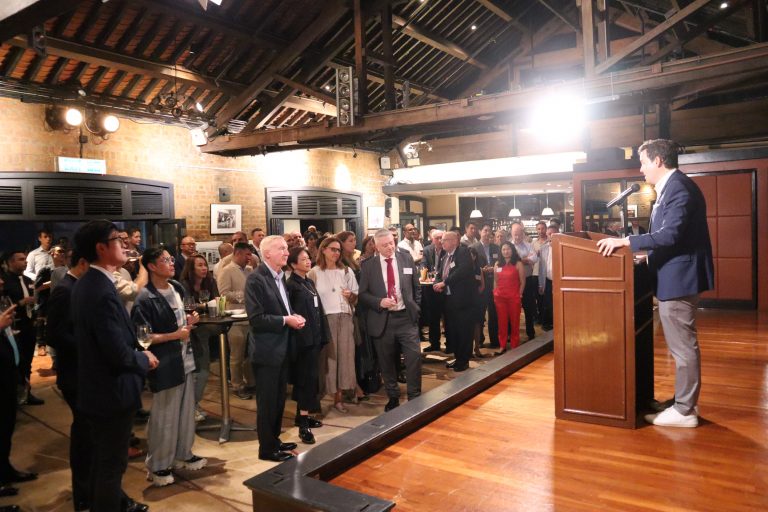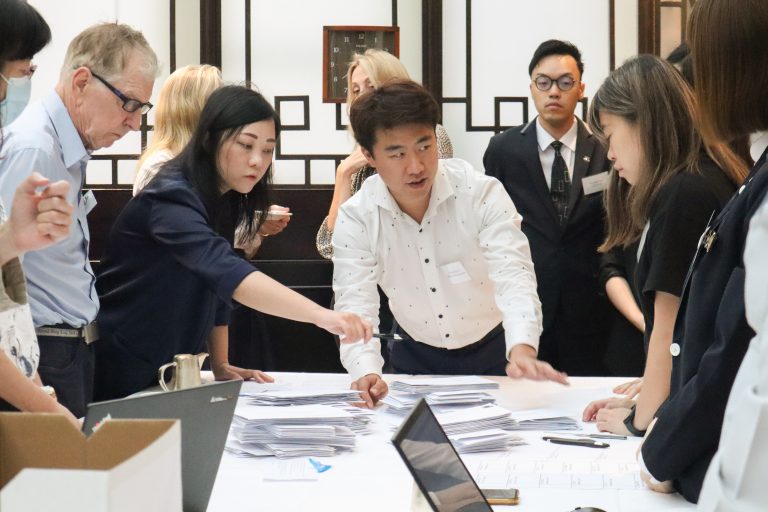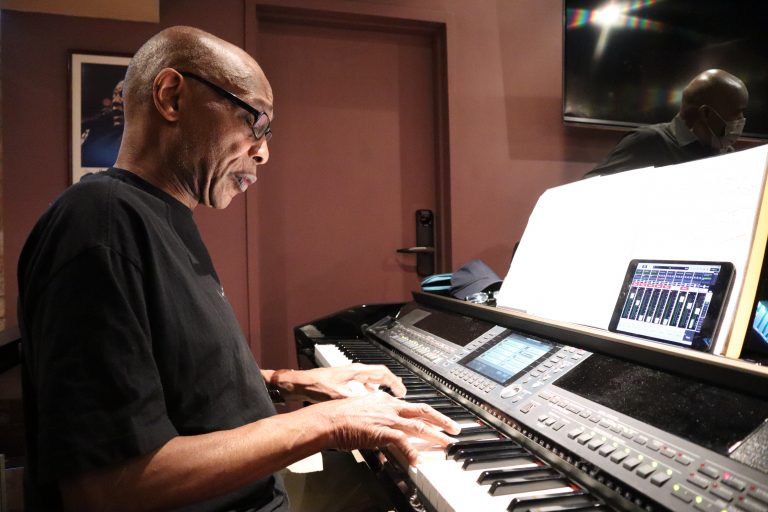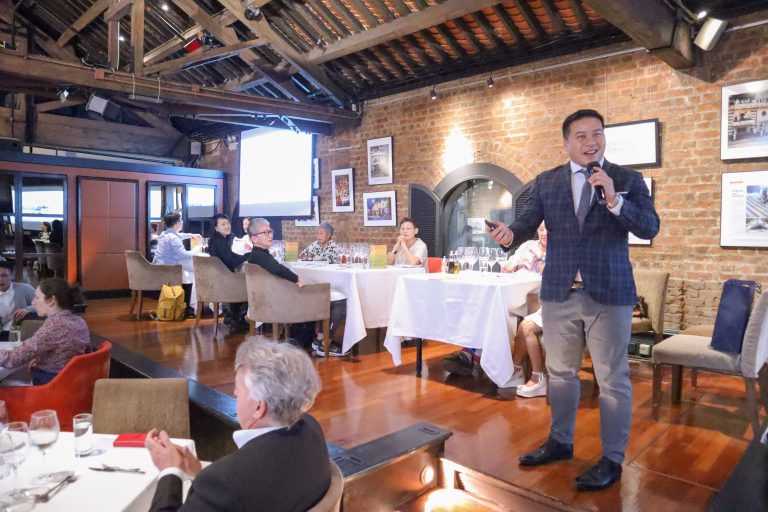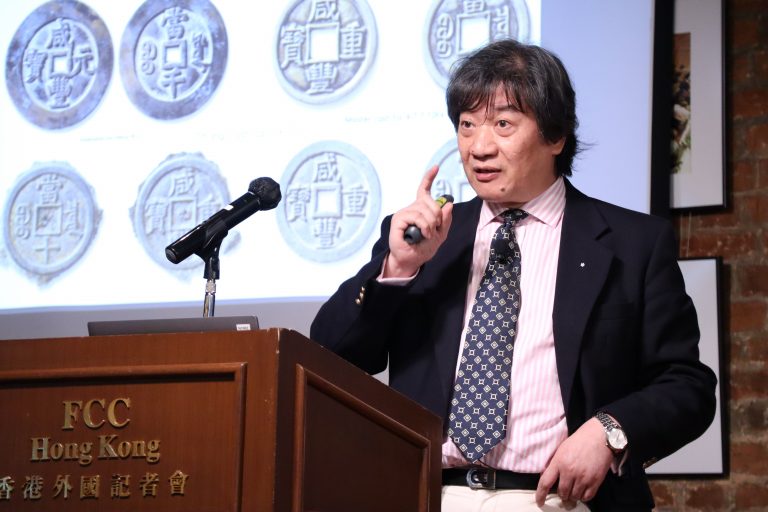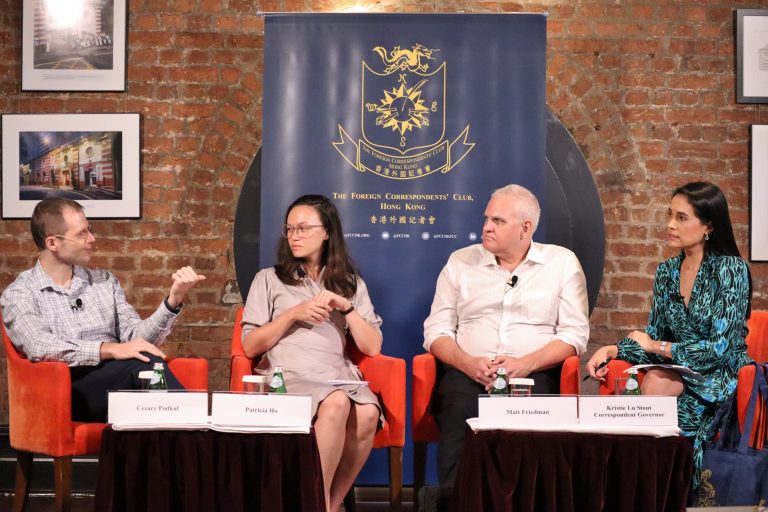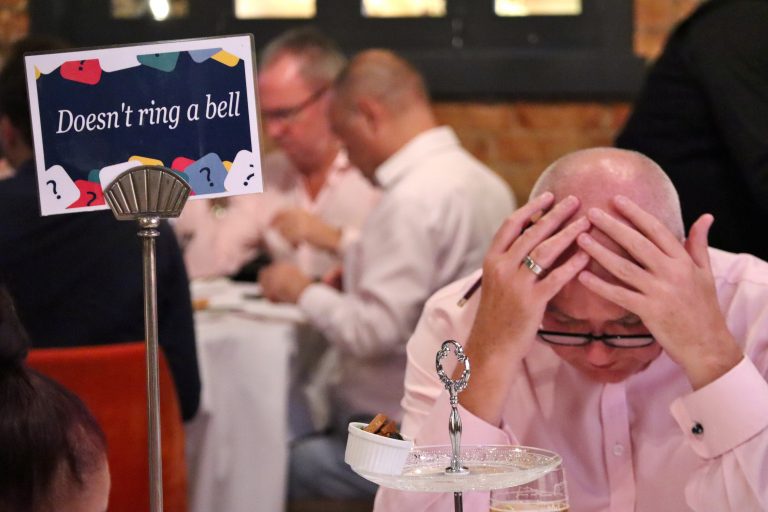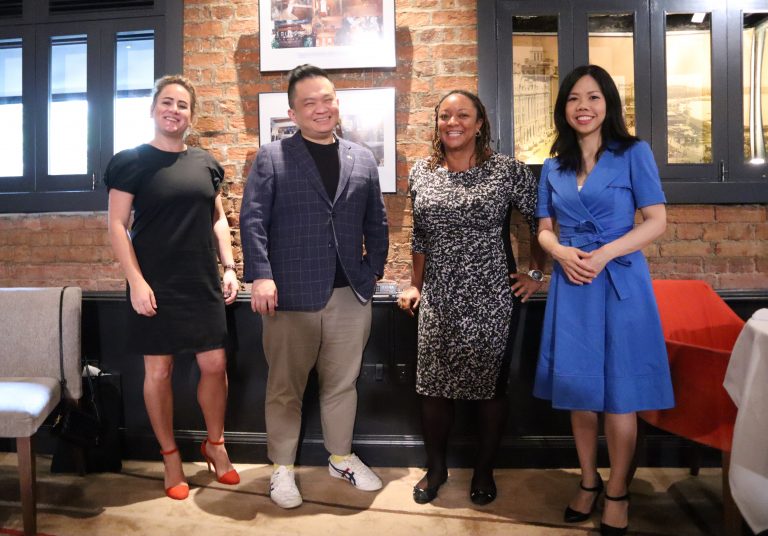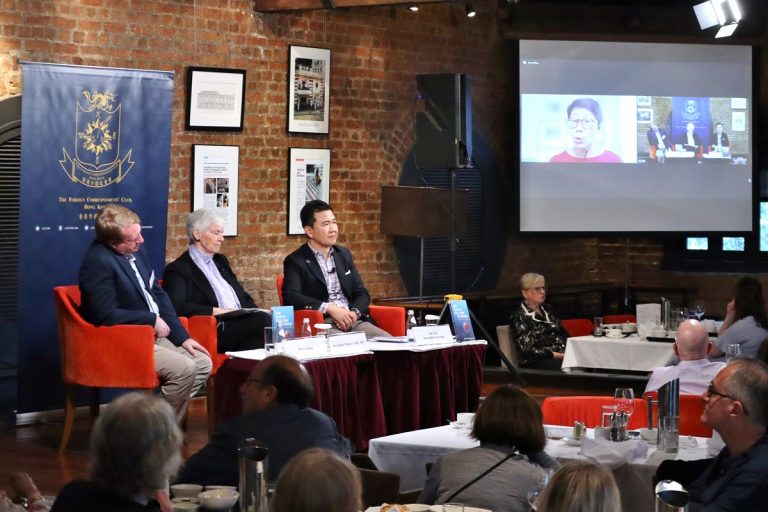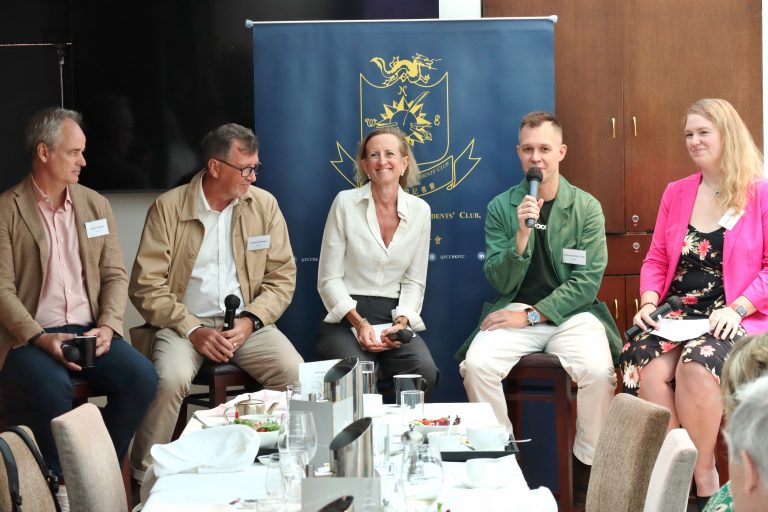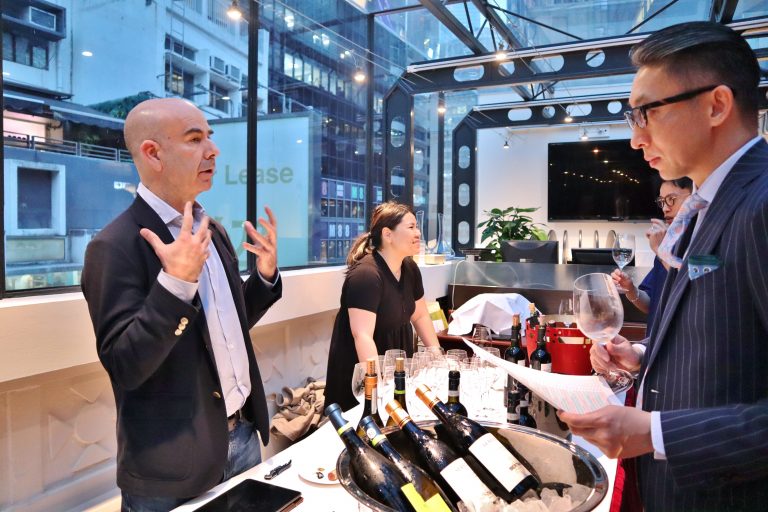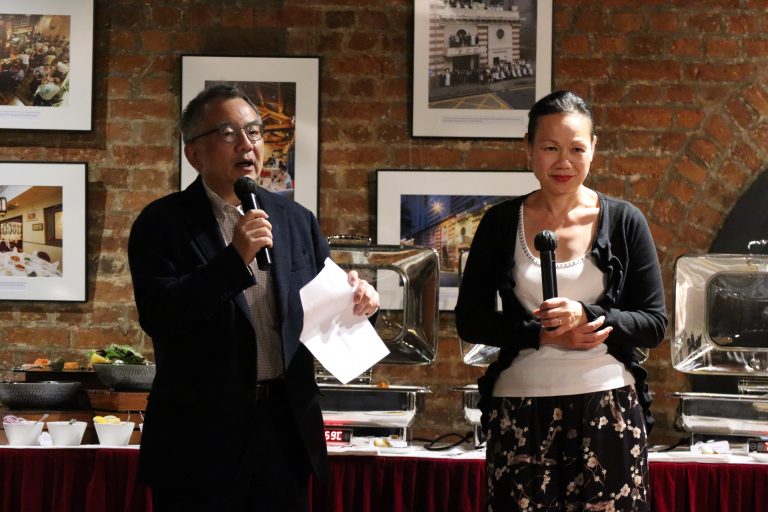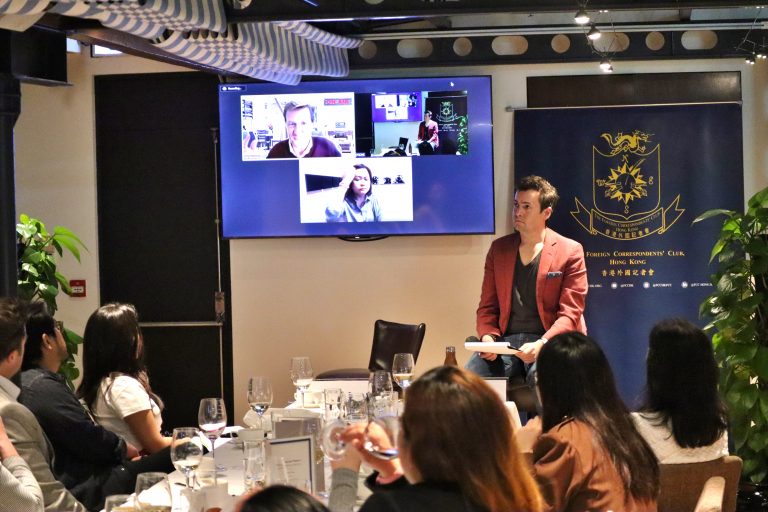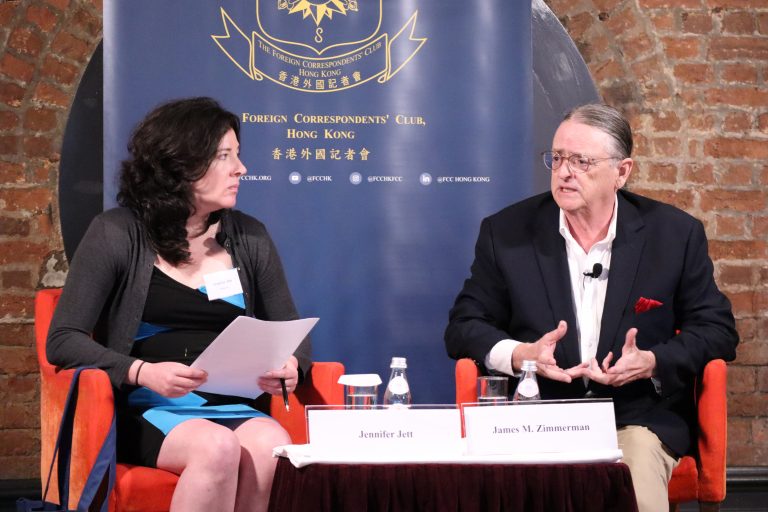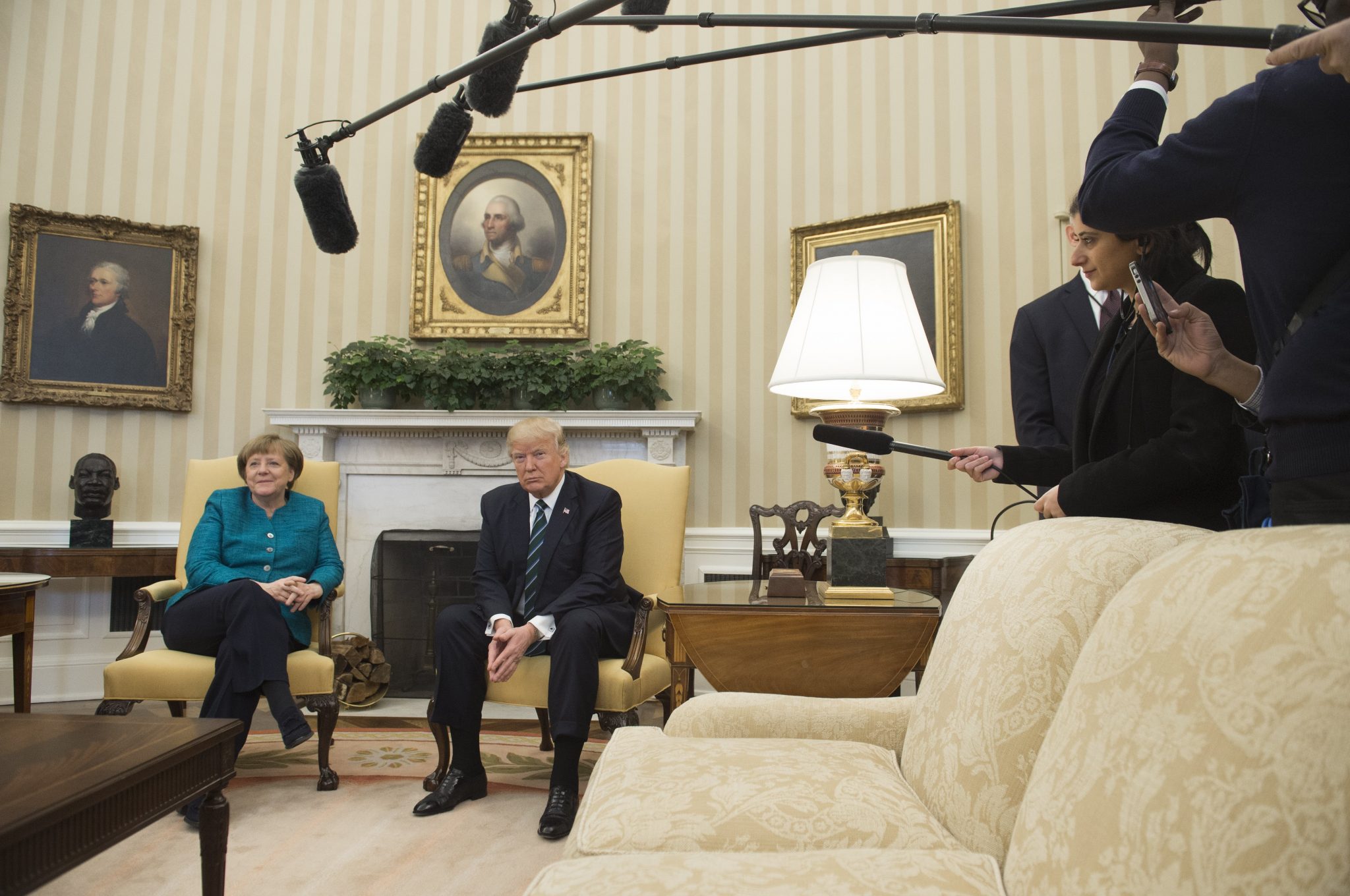
Professionalism in journalism will topple fake news, FCC Journalism Conference hears
 The “missing” bust of Dr. Martin Luther King clearly seen on display during the recent meeting of German Chancellor, Angela Merkel and U.S. President Donald Trump in the Oval Office.
The “missing” bust of Dr. Martin Luther King clearly seen on display during the recent meeting of German Chancellor, Angela Merkel and U.S. President Donald Trump in the Oval Office.Vigilance and professionalism will ensure journalism can rise above accusations of “fake news” and spreading misinformation and bias. That was one of the messages from the second FCC Journalism Conference, which took place at the club on 29 April.
The one-day programme was packed full of speakers, panel discussions and workshops. An in-depth review of the major topics will be published in the July/August edition of The Correspondent.
The title of this year’s conference was “Journalism in the Era of Fake News and Tweeting Presidents”, a hot topic set to keep discussions lively.
After a brief introduction, FCC President Eric Wishart interviewed Evan Osnos of The New Yorker via Skype video link from Washington, D.C. Osnos, a former China correspondent, said the leaky administration of President Donald Trump was encouraging a revival of old-school reporting. “It’s very face to face. There’s notebooks and pens and a lot [of information] is not making its way into the computer.”
The main discussion of the morning attempted to define fake news and addressed its challenges, especially in the United States. Wishart moderated a panel comprising Yumiko Ono of The Wall Street Journal, Jodi Fern Schneider of Bloomberg, Gerry Mullany of The New York Times and Simon Gardner of Reuters. Schneider warned of the verbal attacks from Trump and the increasing physical constraints, such as the plan to move media out of the White House.
The conference also addressed many practical issues for current and aspiring journalists. Former Club president Neil Western and Journal colleague Carlos Tejada hosted a writing workshop in the Main Dining Room. “The best stories are about conflict,” Tejada noted.
Bert’s hosted a graphics and data workshop, moderated by First Vice-President Juliana Liu and featuring John Saeki of Agence France-Presse and Richard Frost of Bloomberg. Given that facts can be faked, Frost advised: “Use data in aggregate.”
Before lunch, Natasha Khan of Bloomberg moderated a panel on technology reporting featuring Ben Richardson of Asia Times, Juro Osawa of The Information and Josh Horwitz of Quartz and the Journal’s Li Yuan. “How could China harness the power of artificial intelligence to control society,” Li asked, ominously.
After the break, South China Morning Post Chief Executive Officer Gary Liu talked about positioning the Hong Kong paper for the future, in which its “intimacy” with China is leveraged to report on the country “in a different way.”
The afternoon was then devoted to several workshops. Club members Vaudine England and Kate Whitehead joined Cedar Communications editorial director Mark Jones and Nikkei Asian
Review’s Zach Coleman to discuss freelancing, while Thomas di Fonzo of the Journal and Irene Jay Liu of Google looked at developments in new media, including 360-degree cameras.
Meanwhile, Alan Wong of the New York Times and Anne Kruger of the University of Hong Kong looked at the role of social media at a panel moderated by Florence de Changy of Le Monde.
Western then moderated a panel of correspondents from Associated Press, Bloomberg, the Financial Times, The Guardian, Reuters and the Journal to look at how the Hong Kong story is reported around the world.
The closing panel, chaired by Lui, looked at covering China with panellists Jamil Anderlini of the Financial Times, Erika Kinetz of AP, former Washington Post correspondent Keith Richburg of HKU, Al Jazeera cameraman Miguel Toran and Paul Mozur of the New York Times.
In his closing wrap, Wishart thanked Khan and the Club’s Membership Marketing Executive for their lead roles in organizing the conference. “I don’t think there’s a more exciting time to be a journalist,” he noted.
And then it was, undoubtedly, time for a well-earned drink.
JOURNALISM IN THE POST-TRUTH ERA
The FCC Journalism Conference held at the end of April, took a hard look at “fake news” and what it means in today’s world of viral stories and tweets. As George W. Russell writes, there’s nothing new in journalists inventing stories but this recent resurgence together with the technology has worrying implications for everyone, everywhere.
Once more, as was the case during the Watergate scandals, our right-wing and fundamentalist zealots are blaming the media for causing the various difficulties in which a president and his henchmen have embroiled themselves.”
This is not a recent outburst from an angry Hillary Clinton supporter in the United States. It’s from a letter to the editor published on 20 March 1987 in the St. Petersburg Times (a Florida daily renamed the Tampa Bay Times in 2011) as the U.S. media were experiencing one of their periodic crises of self-confidence.
The relationship between the U.S. administration and the country’s media had begun to fall apart with the invasion of Grenada in October 1983. The U.S. government denied all media access and censored all news about the operation for more than 48 hours.
Addressing the U.S. Congress later, then-CBS News president Ed Joyce said an Australian correspondent had told him: “We have just seen the end of 200 years of press freedom in the United States.” Yet the Grenada operation was ostensibly the removal of an anti-U.S., pro-Communist regime in America’s backyard and the U.S. public appeared to back the Reagan administration, at least initially.
The gloss of Watergate had receded by the 1980s and overall trust in media had plunged. The Pulitzer Prize-winning author of Common Ground, J. Anthony Lucas, said in 1985 that the public increasingly and correctly perceived the media as primarily interested in protecting established order.
Thirty years later, similar sentiments prevail. Eric Alterman, Professor of English and Journalism at Brooklyn College in New York, excoriated The New York Times’s Washington bureau in a recent op-ed in The Nation. “Its reporters and editors see themselves as part of the country’s ruling establishment, along with politicians, lobbyists, and various hangers-on,” he wrote.
The rise of fake news
This time a new American president, Donald Trump, has energized the anti-media forces with his cries of fake news. “I’ve been dealing with the press a long time,” he said in May 2016. “I think the political press is among the most dishonest people that I’ve ever met.” In December 2015, he noted: “Some of the media’s terrific, but most of it, 70 percent, 75 percent, is absolute dishonest– absolute scum. Remember that: Scum, scum. They’re totally dishonest people.”
For those who thought it was merely campaign rhetoric, there was his famous tweet of 17 February this year, after Trump had assumed office: “The FAKE NEWS media (failing @nytimes, @NBCNews, @ABC, @CBS, @CNN) is not my enemy, it is the enemy of the American People!”
While Trump is a peculiarly American institution, globalization and social media have made “fake news” a worldwide issue. The U.S. is far from the only country where the government openly dislikes the media, and is certainly not the most dangerous place for journalists. China and Russia are chronically bad, and recent crackdowns have occurred in Belarus, Ethiopia, Gambia, Maldives and Nigeria, as well as in putative democracies such as India, Poland and South Africa.
But the current depth of anti-media propaganda in the U.S. is unusual for a modern, democratic nation. And what is all this “fake news” nonsense? It isn’t pranks and April Fools’ Day japes. It isn’t satire like The Onion or our own locally lamented Spike! It isn’t an Apple Daily-style beat-up, or an outright UFO hoax favoured by the Weekly World News.
A suitable definition could be content that is deliberately and maliciously misleading, biased or derogatory, without reference to fact, and influenced by political or some other kind of partisanship. More likely, it is news you simply don’t believe, or don’t agree with.
Sifting lies from fakes
In any event, “fake news” is a battle cry, the now familiar, almost automatic, watchwords of the offended and curmudgeonly, on Facebook, Twitter and in online forums. It is even pervading the comments sections of the South China Morning Post and its online rival, the Hong Kong Free Press.
With time it will lose its effectiveness and will become the media equivalent of shouting that the ref is on the take. But in the meantime, the media must regain the trust of huge swathes of readers. The digital era has not only made news faster, it makes errors more quickly. There is an online race to identify that terrorist, out that racist, name and shame that defender of criminals.
However, inaccurate or erroneous reporting isn’t fake news. Mistakes are retracted and corrected. Remember ATV and the “death” of former Chinese President Jiang Zemin in 2011? The report was wrong and careless but the abject grovelling and absurd soul-searching that ensued was worse – a similar event in 2015 involving the BBC and Queen Elizabeth II resulted in a simple apology. The episode was a local harbinger of the media’s present-day whipping-boy status with governments that have no claim to morality.
More recently, Time mistakenly reported that a bust of Martin Luther King had been removed from the Oval Office after Trump moved in. (It was apparently obscured by a person in the room). Time retracted and corrected, and correspondent Zeke Miller apologized. When I pointed out Time’s immediate contrition to Lawrence Money, a former colleague who is a columnist with The Age in Melbourne and a Trump fan, he responded: “The horse had bolted.”
Combatting bias
To be sure, a lie will scamper halfway around the world before the truth has got its boots on, but the very nature of corrections means they have to follow the original inaccuracy. From a journalism perspective, the more important question is whether Miller was perhaps overzealously seeking an angle that would make Trump look fittingly illiberal and retrograde. The headline, perhaps, had already been written and he needed to find the story.
Trump continues to kick at the pillars of the Fourth Estate: he refuses to address their questions at White House media conferences, his chief spokesman repeats half-truths and misinformation, the U.S. Secretary of State travels to China with a representative of a tame, right wing website.
Some editors see a bit of truth in the allegations of bias from the Trump camp. “Balance is not appeasement, it is a necessary burden of the journalist’s craft and a foundation stone of our liberal democracy,” Simon Bevilacqua, a former editor of The Mercury in Hobart, wrote recently. However, there is no requirement for media to take account of every fringe view on every subject. If that were true, our political pundits would be psychics and homeopaths would write our health columns.
Journalists should not be cowed by the Trump stance, even as it encourages authoritarian regimes in Moscow, Beijing and elsewhere to haul the press further into line. The positive side of the coin – at least in the U.S. – is that the Trump regime is energizing the media: ramping up its moral focus of keeping the powerful accountable while also stimulating its bottom line.
News organizations are strengthening their defences. The digital team at Le Monde has built browser add-ons to detect unreliable news articles. Its fact-checking unit, Les Décodeurs, was set up in the wake of the Paris terrorist attacks in 2015. This won’t convince everyone, of course. “Technology cannot cure partisanship,” Rasmus Nielsen, Director of Research at Oxford University’s Reuters Institute of Journalism, told me before he addressed an FCC cocktail event on 27 March.
Even more encouragingly, newspaper subscriptions, especially digital, are trending up in the post-truth era, with The Washington Post, The Wall Street Journal, Los Angeles Times, The New York Times, The Atlantic and Mother Jones all reporting a Trump bump. Outside the U.S., The Guardian and the Financial Times report strong growth.
In February 2016, CBS Chairman Leslie Moonves said the Trump phenomenon “may not be good for America, but it’s damn good for CBS.” The ripples caused by the “fake news” phenomenon might not be good for perceptions of the media but it just might help keep the business alive.

